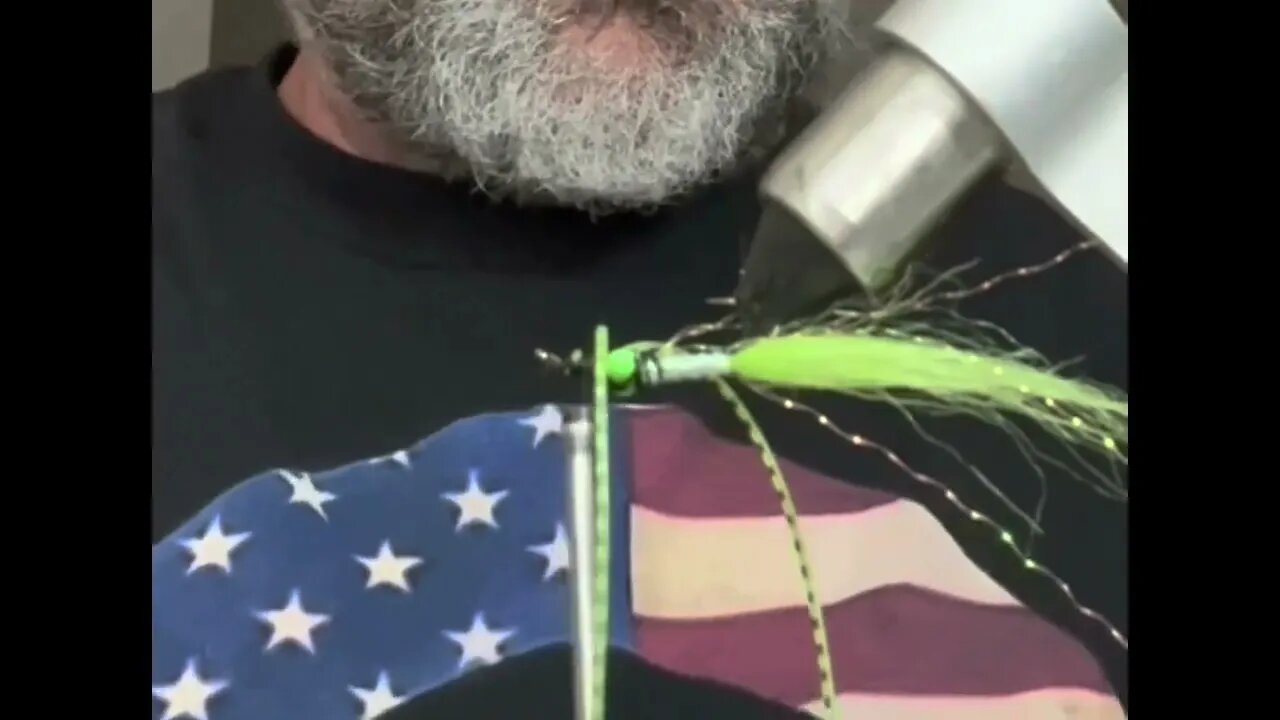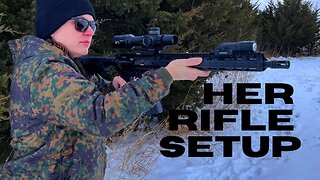Premium Only Content

#10 Bi-Action Clouser Minnow #flytying #fishing #bass #trending #bhfyp #bass #flyfishing #onthefly
We love to push the envelope when we’re at the vise, and like most fly tyers we’re always on the search for the next big fly pattern. However, today we’re taking a step back to pay tribute to one of the most versatile patterns of all time – The Clouser Minnow.
Originally designed for smallmouth bass in the late 80’s, the Clouser Minnow has caught fish all over the world in both fresh and salt water. In fact, we fish Clouser variations all the time for bonefish at Andros South.
However, one place they really shine is on our huge run of silver salmon at Alaska West. Our guests are often surprised to learn that when targeting coho many of our guides will choose a simple pink Clouser Minnow over many other commercial salmon patterns! They work really, really well on our river, so today we thought we’d show you the finer points of tying them.
Clouser Deep Minnow – Tying Instructions
Although the Clouser Minnow is generally regarded as a simple pattern to tie, many tyers don’t utilize some of the original techniques used by Bob Clouser himself. Check out the step by step below for some tips on tying better looking Clousers.
Materials:
Hook: Daiichi 2141, sz. 2
Thread: UTC 140 Denier, White and Cerise
Eyes: Large Painted Lead Eyes, Pearl White
Tail/Body: White Bucktail
Wing: Hot Pink Bucktail
Flash: UV Pearl Krystal Flash
Step 1: Starting with white thread (or any color matching what will be the belly of the fly), attach your thread and advance approximately 1/3 down the shank.
Step 2: Tie in lead eyes using figure-eight wraps both over AND underneath the shank. This will keep the eyes from rolling around the shank.
Step 3: Prepare a small clump of white bucktail roughly 2-2.5 times the length of the shank and catch in front of the eyes. Trimming your bucktail to length before tying in will allow for a clean tie in point.
Step 4: Pull the bucktail tight over the lead eyes while advancing thread to behind the lead eyes. Using your thumb and forefinger, pinch the shank of the hook, thus holding the bundle of bucktail on top of the shank. This is very important as this causes the thread to compress the bucktail against itself, rather than around the shank, causing the fibers not to flare more than desired. Wrap the thread over the bucktail to approximately the point of the hook using light wraps of thread.
Step 5: Wrap the thread forward in touching turns to create a smooth body and return the thread to just in front of the lead eyes. Whip finish and trim.
Step 6: Turn the fly over in the vise, and attach thread the same color as the top wing of the fly (in this case, pink). Keep in mind this is how the fly will ride in the water (hook point up).
Step 7: Double over a few strands of Krystal Flash and tie in just in front of the lead eyes. The flash should extend slightly longer than the bucktail.
Step 8: Catch in a wing of pink bucktail in front of the lead eyes, roughly the same length as the tail. Make a few loose wraps of thread to start before increasing tension. This helps to keep the fibers from flaring.
Step 9: Build a nice head, whip finish, and cement.
-
 10:58
10:58
Degenerate Jay
21 hours ago $7.19 earnedThe Rejected Deadpool And Wolverine Joke That Was Too Far For Disney
64.9K4 -
 13:00
13:00
Dermatologist Dr. Dustin Portela
13 hours ago $3.38 earnedAnother Insurance Company Harming Patients - Doctor Explains
31.5K4 -
 52:32
52:32
Survive History
20 hours ago $5.57 earnedCould You Survive in King George's Redcoats During the Jacobite Rising?
28.1K3 -
 17:53
17:53
Fit'n Fire
18 hours ago $2.06 earnedA Rifle for the Family -- BCM MK2 BFH and Gunnr Optics Odin 1-10x28mm LPVO
18.5K2 -
 1:03:52
1:03:52
GrassRootsWarriorNetwork
1 month agoWe The People Are The News Now While MSM Is On It’s Way Out - YourNews.com with Sam Anthony
17.4K -
 21:12
21:12
DeVory Darkins
13 hours ago $19.45 earnedGavin Newsom gets what he deserves after NBC Reporter FACT CHECKS his Lies
75.2K59 -
 1:57:13
1:57:13
MyronGainesX
14 hours agoFormer Fed Explains Sting That Led To The Murder Of A State Trooper
90.1K21 -
 3:56:27
3:56:27
Due Dissidence
20 hours agoNewsom ROASTED For Pod Save Interview, Candace Owens CALLS OUT Elon, Ian Carroll RATIOES Israel Post
82K55 -
 2:16:17
2:16:17
TheSaltyCracker
12 hours agoLooters Descend on LA ReeEEeE Stream 01-12-25
158K335 -
 40:32
40:32
Man in America
16 hours agoRockefeller Medicine COLLAPSES as God's Natural Healing Takes Over w/ Angie Tomky
58.6K37